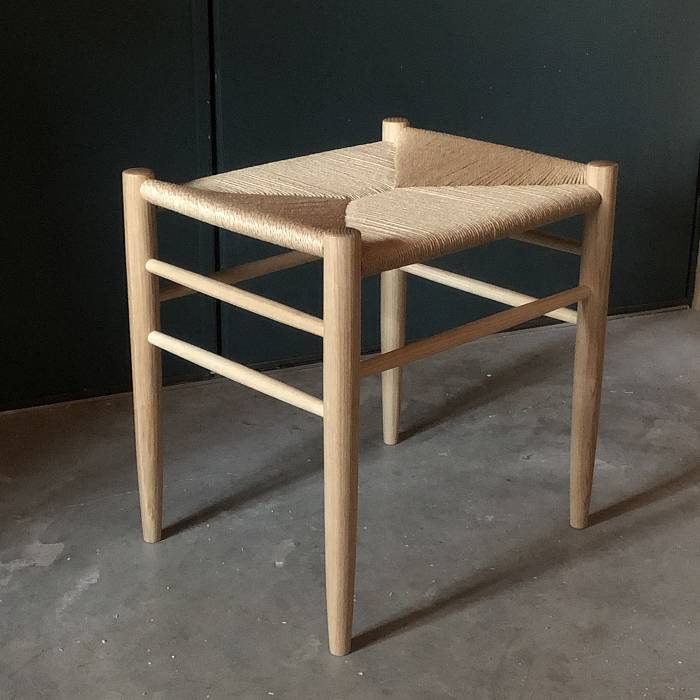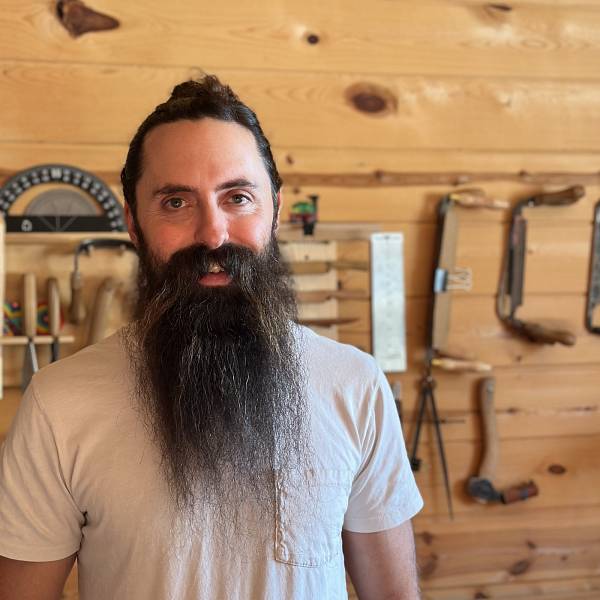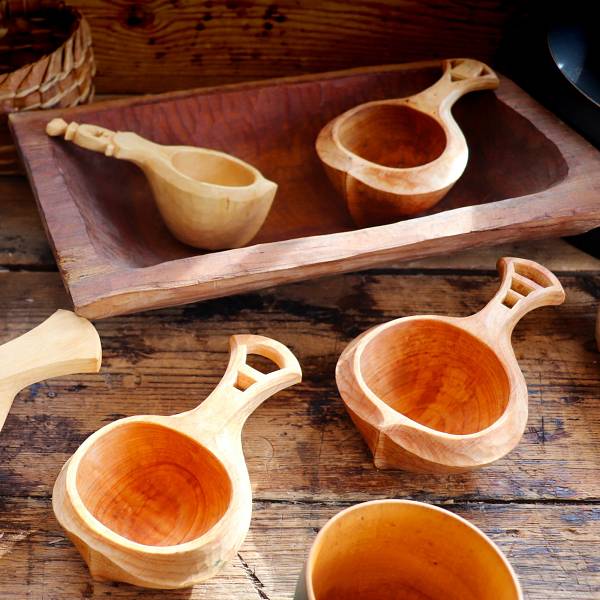
Woodworking & Furniturecraft
Danish Cord Stools
Course Overview
This class blends traditional joinery with modern efficiency to create a refined Danish cord stool. While parts are provided pre-turned, students will focus on shaping, spokeshaving, and fitting each component to ensure a precise, thoughtful build. We’ll explore key chairmaking concepts like kiln-dried joinery and grain orientation, while also preparing the stool for the main event: weaving a beautiful and durable envelope-pattern seat with Danish paper cord. The weaving takes up the entire final day of class and feels like its own immersive experience—making this course uniquely balanced between woodworking and seat weaving. Note that this course involves both extended periods of sitting and standing. The weaving process is a physically demanding skill for the hands and arms.
In this class, you will:
- Spokeshave provided turned legs and rungs to refine their surfaces and overall form.
- Shape round seat rails into precise oval forms that complement the Danish cord seat.
- Watch a demonstration of turning parts and sizing tenons on the lathe (all stool parts are pre-turned for you).
- Learn the design logic and jig use behind the stool, so you can apply these concepts to future projects.
- Layout and bore mortises into the legs using simple, adaptable jigs.
- Understand proper grain orientation to ensure strong, long-lasting joints.
- Use a shop-made kiln to explore how wood shrinkage and moisture movement can strengthen joinery.
- Assemble the stool.
- Weave an envelope-pattern Danish paper cord seat, spending the entire third day focused on this immersive process.
Notes
- Pre-turned parts: All stool components will be provided as a kit with pre-turned legs, rungs, and seat rails. The class focuses on refining surfaces, shaping seat rails to work with the Danish cord, and achieving clean transitions between parts.
- Two-part experience: This class is essentially two builds in one—the woodworking portion prepares the frame for the intensive third day of seat weaving. Both stages are essential to the final result.
- Ideal for: Students who want to develop hand-tool skills, learn precise assembly techniques, and dive deeply into seat weaving in a supportive, step-by-step environment.
Required Tools
Participants should bring a small kit of tools if possible, but I’ll have plenty of extras to share. You are welcome to bring your own tools if you prefer, but it’s perfectly fine to show up without a full kit.
- Gloves for Seat Weaving: I recommend form-fitting gloves with leather palms for protection and fabric backs for comfort and breathability. Try them on in person if you can to ensure a snug fit. Here’s a style I like: https://www.acehardware.com/departments/home-and-decor/apparel/gloves/7011428
Optional Tools
Recommended, but all tools will be provided if you don’t have your own.- Pencil
- Ear and eye protection (North House provides these, but you might prefer your own)
- 6” ruler or small measuring tool
- Tape measure
- Folding ruler
- Sloyd knife (Mora 106 or similar)
- Spokeshave
- Drawknife
- Card scraper
- Side cutters (for trimming Danish cord)
Session Information
This course is part of Wood Week 2026. Plan to stay a day longer for the Carvers Conference on Friday, March 6, which features demonstrations, speakers, and community gatherings offered as a benefit to students enrolled in Wood Week coursework. Full schedule available online in early 2026.


